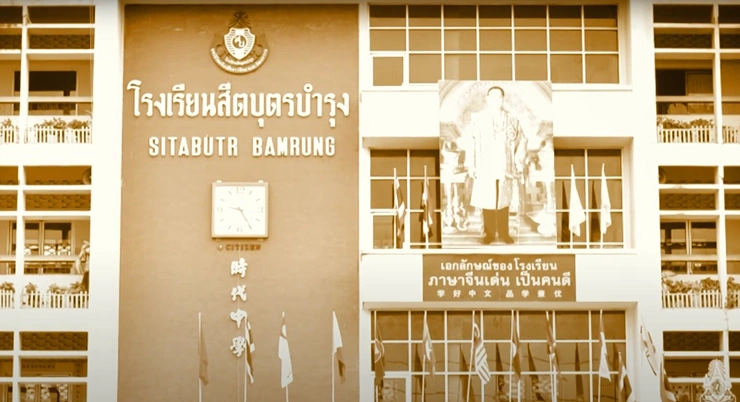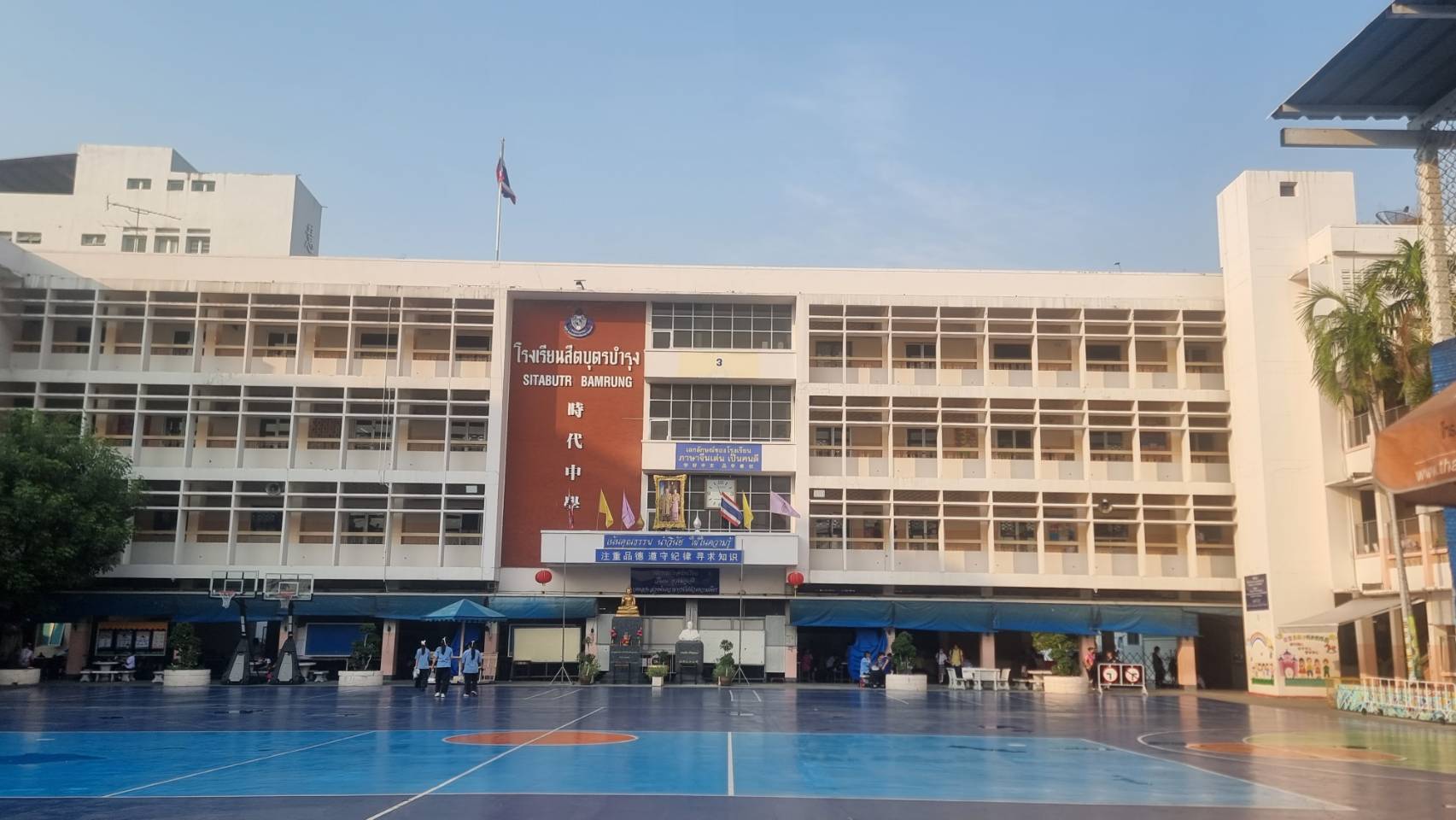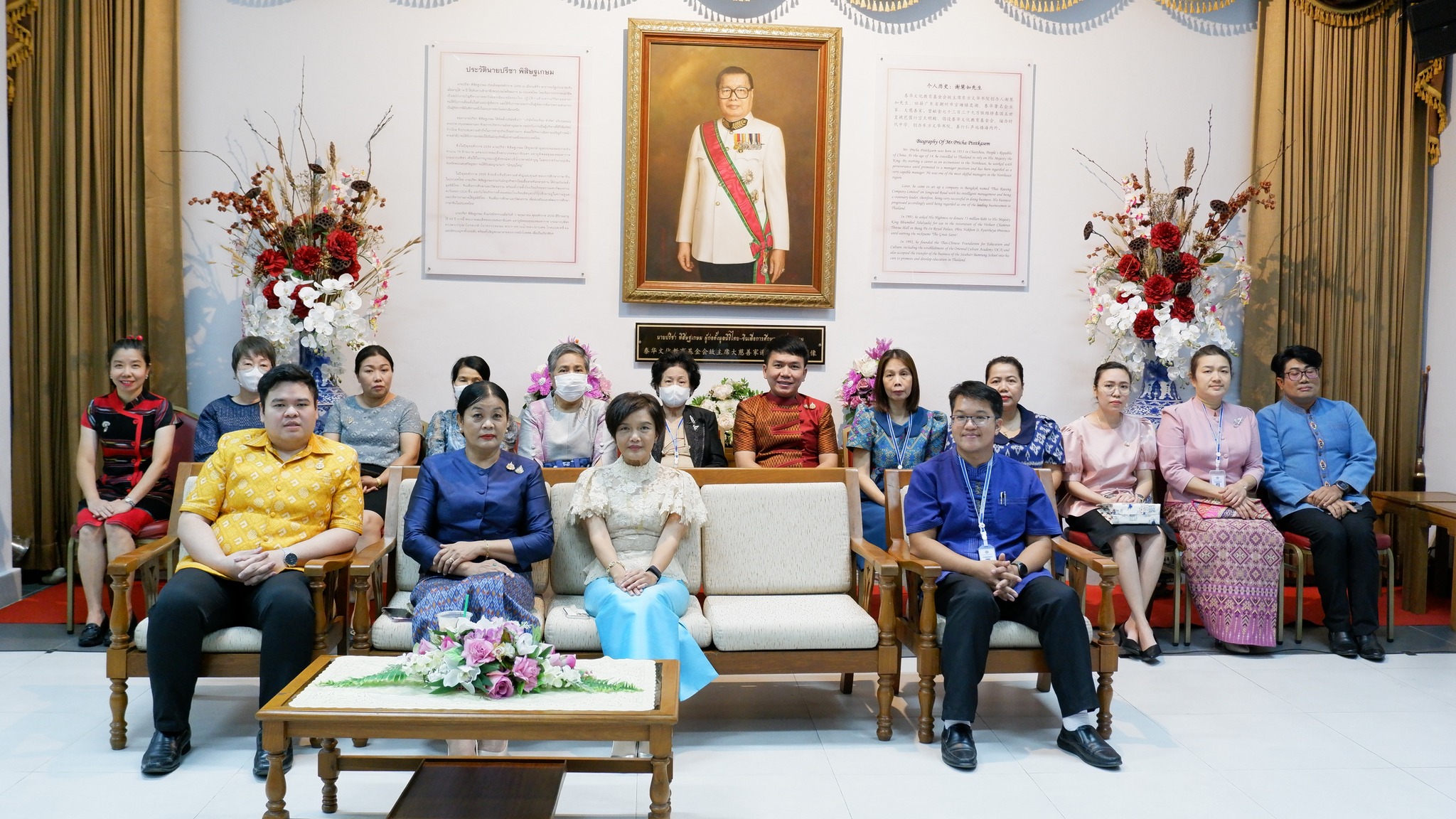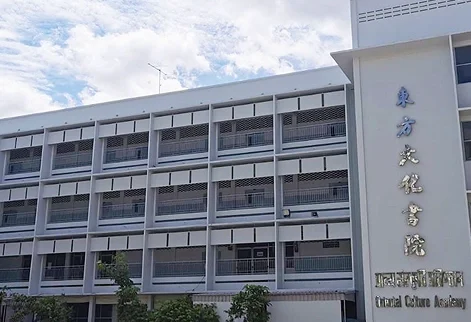History
February 25, 2025 2025-04-24 7:19History

In the year 1921
Phaya Amatya Phong, Khun Sawatdiraksa (Khun Phor Khao Sitabutr), officially established Sitabutr Bamrung School, entrusting his youngest daughter, Miss Rattana Sitabut, to be the owner and manager of the school.
The name of the first student appears in the student register as Sirilak Chantarangsuk (Dr. Sirilak Chantarangsuk, former Permanent Secretary of the Ministry of Transport).
In the year of 1915
As the school continuously improved and developed, it was accredited with a status equivalent to that of government schools. This was also the year when the number of students reached 2,000, with 44 classrooms.
In 1944
During the period of World War II, all the school buildings were destroyed by bombing and fire, which forced the closure of the school. Later, in 1948, Mr. Chin Nutthayothin took over the school's operations and relocated the school to a new building on the opposite side of Soi Rong Mueang 5, with the front facing Jaras Muang Road, which the land was owned by The Crown Property Bureau.

In the year 1957
Mrs. Anong Nakornwichaikul took over the operation and constructed new school buildings made of reinforced concrete in the following sequence:
Building 1 was constructed in
Building 2 was constructed in
Building 3 was constructed in
Building 4 was constructed in

In 1993
Mr. Preecha Pisithkesom, President of the Thai-Chinese Foundation for Education and Culture, accepted the transfer of the business.
Sitabutr School entered the foundation. After that, the foundation invited famous and respected personnel in both education and society to manage the school, such as Professor Dr. Pridi Kasemsap, former president of Thammasat University, Dr. Singto Changtrakul, former director of Bangkok Christian College, and Ms. Prakong Thanatngan, former director of Satri Sisuriyothai School, etc. Sitabutr Bamrung School is a general school for pre-primary to secondary school year 3.
Note: When Sitabutr Bamrung School came under the responsibility of the Sino-Thai Foundation forCulture and Education, the Foundation launched a program to promote the teaching of Mandarin Chinese. The objective of this initiative is to support economic development in the region. As a result, the Foundation has divided the school's educational system into two parts:
From the history of Sitabutr Bamrung School, which has journeyed for nearly a century up to the present day, all of this has been achieved through the perseverance, diligence, dedication, and patience of everyone involved throughout every era, who have continuously worked together to build the school's reputation."
In the year 1997
In the year 2014
Flying Officer Monkol Pisitkasem ,the Chairman of the Foundation, recognized the diligence and hard work of the school's past administrators and staff, which led to the emergence of alumni who brought honor and benefit to both the school and society in various fields. Notable individuals include Professor Marut Boonnak, Sueb Boonyaratphan, Air Chief Marshal Prayad Ditsayasarin, Veeratharm Poolsawat, Air Chief Marshal Wirot Wongwises, Sombat Metinee, Pol Tanthasitheer, and Sompol Piyapongseri.
These admirable legacies prompted Flying Officer Mongkol Phisitkasem, the former Chairman of the Sino-Thai Foundation for Culture and Education, to take an active interest in plans for expanding the school building in preparation for the growth of classrooms. He also made concerted efforts to support and develop specialized staff through concrete measures, such as implementing international assessments, inviting language teaching experts, reviewing results from academic seminars at various universities, and exchanging knowledge in modern academic disciplines to enhance the efficiency of teaching and learning for the benefit of all stakeholders. These efforts align with the school’s philosophy: "Virtue leads the way, discipline follows and the pursuit of knowledge is the goal."
In 2022
Mrs. Orawan Phisitkasem, the current president of the Sino-Thai Foundation for Culture and Education, focuses on educational development by promoting the use of modern multimedia equipment, computer laboratories, and many other resources. This is aimed at enhancing the quality of the management system and educational administration to be more efficient. Additionally, the goal is to provide the general public with access to high-quality education at affordable prices, with schools conveniently located in the heart of the metropolis.




